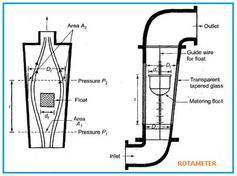Advantages and Disadvantages of Ultrasonic Flowmeters
Advertisement
Let’s explore the pros and cons of using ultrasonic flowmeters for measuring fluid flow. These devices utilize ultrasonic transducers, often piezoelectric crystals, to determine the average velocity of a fluid by analyzing the transit time of ultrasound waves. By measuring the difference in transit times between pulses traveling with and against the flow, these flowmeters provide accurate readings. The placement of these crystals can vary depending on the specific flow measurement setup. Importantly, the input and output of an ultrasonic flowmeter maintain a linear relationship.

Benefits of Ultrasonic Flowmeters
Here’s a rundown of the key advantages that make ultrasonic flowmeters a popular choice:
- Non-Intrusive Measurement: One of the biggest advantages is that they don’t obstruct the fluid’s flow path. This means no pressure drop or potential for contamination, which is critical in many applications.
- Fluid Property Independence: The output readings are not affected by changes in the fluid’s viscosity, density, or temperature. This provides consistent and reliable measurements across varying conditions.
- Bidirectional Flow Measurement: Ultrasonic flowmeters can measure flow in both directions, making them versatile for systems where flow might reverse.
- Excellent Dynamic Response: They offer very good dynamic response, meaning they can quickly react to changes in flow rate, making them suitable for rapidly fluctuating flows.
- Electrical Output: The output is in electrical form, which is easily integrated with analog and digital readout systems, making data logging and control straightforward.
- High Accuracy: These flowmeters boast high accuracy, typically around +/-2% of the full scale, which is suitable for many precision measurement needs.
Drawbacks of Ultrasonic Flowmeters
While ultrasonic flowmeters have a lot to offer, there are some disadvantages to consider:
- Higher Cost: They generally come with a higher initial cost compared to some other types of flowmeters.
- Complex Design: The design of these devices can be complex, requiring careful consideration of the transducer placement and signal processing.
- Expensive Acoustic Parts: The acoustic components, like the transducers, are often expensive, contributing to the overall cost.
Advertisement
 T&M
T&M 








